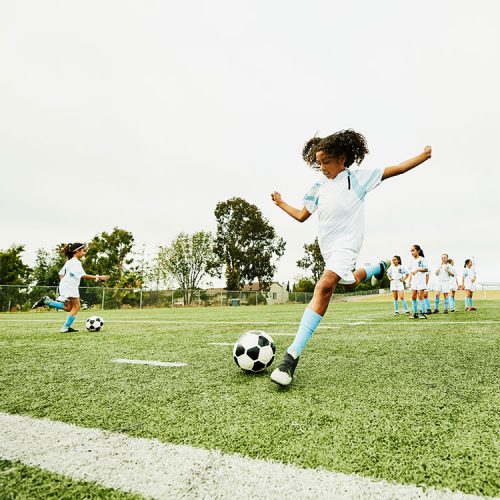According to the Statistic Brain Research Institute, 36.3 million U.S. children between the ages of 5 and 18 play an organized sport. While the health benefits of physical activity cannot be denied, it does come with some risks.
During 2010–2016, an average of 283,000 U.S. emergency room visits per year for sports and recreation-related traumatic brain injuries (TBIs) occurred among children. Approximately 45% of those injuries were associated with contact sports.1
TBIs can result in long-term, negative health consequences, including memory loss, behavioral and mood changes, and persistent headaches. Additionally, research tells us that, compared with adults, younger persons are at increased risk for TBIs with increased severity and prolonged recovery.2
Add to this the fact that vision problems and academic difficulties are highly prevalent in children who sustain a TBI and that potentially spells trouble for kids and sports.
In one study, researchers found that in children between the ages of 5 and 18 who had lingering symptoms 10 or more days after sustaining a concussion, 46 percent had vision problems such as blurred vision. Additionally, 29 percent reported having academic difficulties.3
Researchers noted, “Vision problems were commonly reported in children with concussions and were independently associated with those reporting academic difficulty.”3
Researchers concluded that a comprehensive vision exam should be considered in children reporting academic difficulty and in the development of return-to-learn protocols following any concussion or TBI.
You can also take precautions to prevent a head and/or eye injury in the first place. This includes wearing sport-appropriate headgear, including helmets, face masks, and eye safety goggles/glasses; and staying off the court or field following an injury until you have been cleared by a physician, including an eye care professional.
References
- Dana Waltzman, PhD, et al. Trends in Emergency Department Visits for Contact Sports–Related Traumatic Brain Injuries Among Children — United States, 2001–2018. Morbidity and Mortality Weekly Report (MMWR). July 2020; 69(27);870–874.
- McCrory P, et al. Consensus statement on concussion in sport—the 3rd International Conference on Concussion in Sport, held in Zurich, November 2008. J Clin Neuroscience 2009; 16:755-63.
- Swanson MW, et al. Academic difficulty and vision symptoms in children with concussion. Optometry and Vision Science. 2017 Jan; 94(1):60-7.
